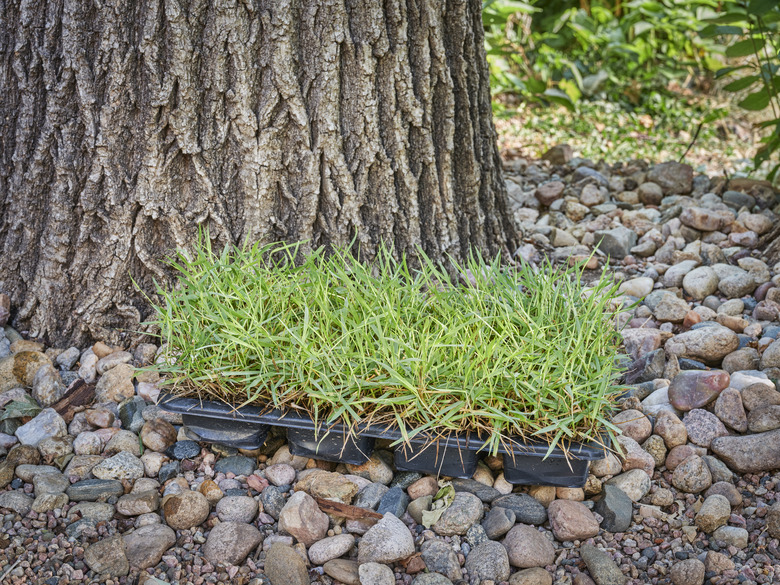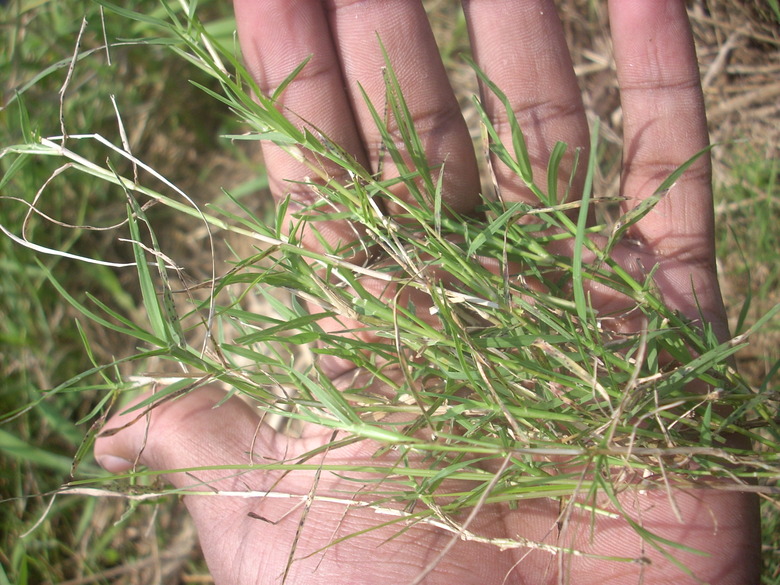How To Remove Bermuda Grass From A Zoysia Lawn
Bermuda grass can appear to take over your nice lawn in a nanosecond, as it's super tough and spreads easily, both above ground through stolons and below ground by the the spread of its rhizomes.
The primary goal when controlling Bermuda in zoysia (Zoysia spp.) is to make the zoysia so healthy and vibrant that Bermuda grass (Cynodon dactylon) cannot even take hold. But if you do see Bermuda in your grass, you may also need to reach for an herbicide.
Some homeowners, especially in the southern U.S., actually plant Bermuda grass; turf experts report that a Bermuda grass lawn is more heat- and drought-tolerant than a zoysia lawn. But because Bermuda grass is so invasive, most experts do not recommend it for lawns.
Bermuda Grass vs. Zoysia Grass
Both Bermuda and zoysia are warm-season grasses. Although Bermuda grass is established in lawns in the South, it is no longer recommended as lawn turf, according to the University of Missouri.
If, however, a lawn has already been entirely invaded by Bermuda grass, eradication may be impossible. In this case, the best scenario is to just accept that you have a Bermuda grass lawn, fertilize it and mow it, and try to enjoy it.
Here are the primary differences between the two types of grasses:
Zoysia
**Advantages:**
- Good drought and heat tolerance
- Competes well with weeds
- Forms sod well
- Has a dense growth
- Requires little fertilizer
**Disadvantages:**
- Dormant, straw-colored in winter
- Poor shade tolerance
- Recovers slowly from overuse
- May be damaged in cold winters
- Susceptible to thatch
Bermuda
**Advantages:**
- Excellent drought and heat tolerance
- Grows quickly to cover a large area
- Good fine texture and density
- Forms sod well
**Disadvantages:**
- Dormant, straw-colored in winter
- Poor shade tolerance
- Invasive and difficult to eradicate
- Requires regular fertilizer
Ensuring a Healthy Zoysia Grass Lawn
The first line of defense when controlling invasive weeds, including Bermuda grass, in your zoysia lawn is to make sure the zoysia has all the tools and weapons it needs in its own arsenal. A vibrant and healthy zoysia lawn can turn away weeds with aplomb.
Here's what zoysia needs:
- Plant it in a full sun location, meaning six to eight hours of daily sun.
- **Provide infrequent but deep irrigation,** especially when conditions are very dry. Water in the morning hours to prevent moisture loss to evaporation. Drench the soil with each watering to a depth of 4 to 6 inches, saturating the main root zone of the zoysia.
- **Maintain a slightly alkaline soil,** with a pH of 6.0 to 6.5. Get a soil test and apply lime if the pH dips below 6.0.
- Mow to a cutting height of about 1 to 2 inches, but remove no more than one-third of the leaf blade at one time.
- **Fertilize from May through August,** depending on the results of your soil test.
How to Fertilize Zoysia
If the soil test reveals no serious deficiencies, use a lawn fertilizer with a formation of NPK of about 3:1:1, 4:1:1 or 4:1:2. For instance, a fertilizer labeled as 16-4-8 has an NPK (nitrogen, phosphorus, potassium) ratio of 4:1:2.
If the soil test shows a deficiency in phosphorus or potassium or you have been unable to get a soil test, up the ratio of phosphorus and potassium to an NPK ratio of about 1:1:1 or 2:1:1.
Controlling Bermuda Grass With Herbicides
Herbicides can be either selective or non-selective. The broader, non-selective types kill any plant they come into contact with.
Fenoxaprop and Fluazifop
Since you certainly don't want to poison your zoysia grass, choose a selective herbicide to target just the Bermuda. Some examples of herbicides that will kill Bermuda grass are those with the active ingredients fenoxaprop or fluazifop.
Some products containing these ingredients are available only to commercial growers or licensed pesticide applicators, but some are available in garden supply shops. For example, Grass-B-Gon made by Ortho contains fluazifop, and it targets Bermuda grass among others, as does the product Ornamec.
How to Apply Herbicides
Apply a selective herbicide in the early spring when new growth is less than 6 inches, recommends the University of California Integrated Pest Management Program. Reapply when the growth again reaches almost 6 inches.
While consistency is important when using herbicides, read the product directions carefully and follow all safety precautions. You'll have the best results when the Bermuda grass has a lot of leafy growth.
References
- University of California Davis: Bermudagrass
- SodSolutions: How to Remove Invading Bermudagrass and Centipedegrass from a Zoysia Lawn
- University of Missouri: Managing Lawns and Turfgrass
- University of Missouri: Establishment and Care of Zoysiagrass Lawns
- University of Tennessee Extension: 1 Controlling Bermudagrass in Zoysiagrass and Tall Fescue Turf

